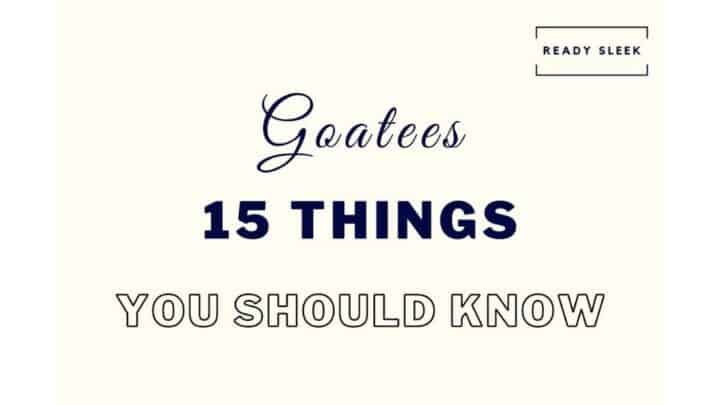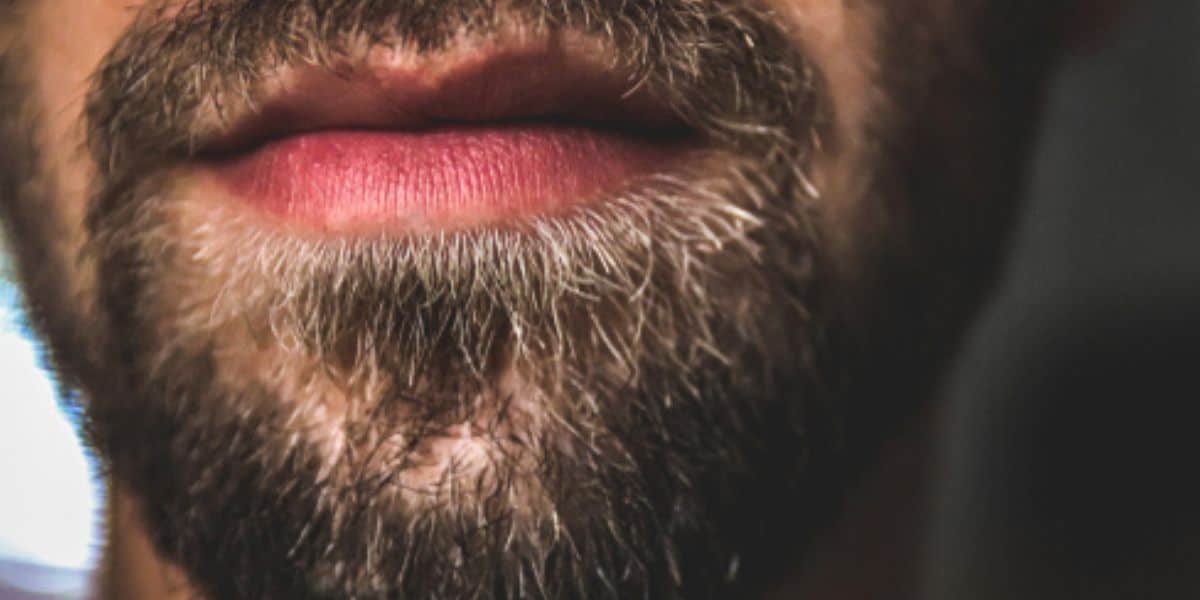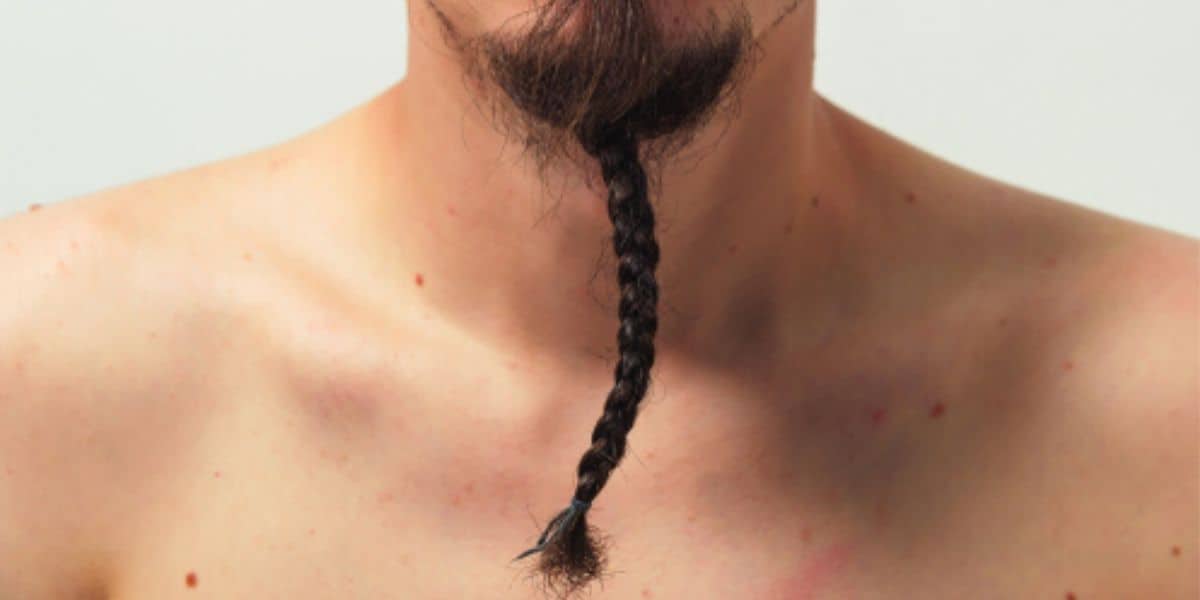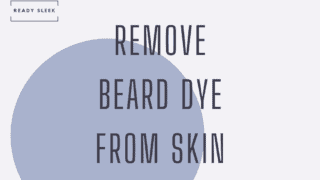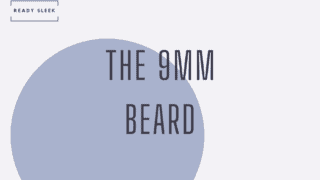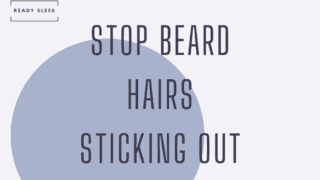It’s funny how a beard style as timeless as the goatee can be so misunderstood. It’s globally recognized and versatile, yet there are still plenty of questions about them that are hard to find proper answers to.
That’s what I’m going to run through today – answers to some frequently asked yet rarely answered questions on this classic facial hairstyle.
Goatee styling, maintenance, and etiquette; we’ll run through it all.
By the end of this, there shouldn’t be any holes in your goatee knowledge. We’re about to fill them.
Let’s get to it.
1. What Exactly Is A Goatee?
A “goatee” is any facial hairstyle where there’s hair on the chin but not on the cheeks. This may or may not include a mustache and if there is one, it may or may not connect to the chin beard.
A “traditional” or “pure” goatee is one where there is simply a tuft of hair on the chin and nowhere else. The purist goatee lovers will often claim that this is the only true goatee style and anything else shouldn’t be referred to as one.
However, more modern variations of the goatee are definitely more common now, having gained popularity in the 1990s.
Here, you’ve got hair on the chin as well as a mustache. If the chin beard and mustache are connected, it’s referred to as a “connected goatee” or a “full goatee”.
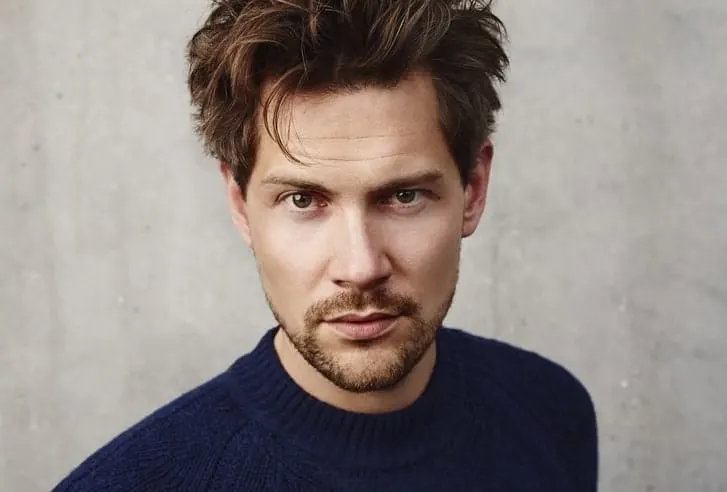
It has the appearance of encircling the mouth, which is why it’s often also called a “circle beard”.
If the chin beard and mustache are disconnected, it’s called a “disconnected goatee”.
Ultimately, there’s only one rule that needs to be stuck to for it to be called a goatee. There cannot be any hair on the cheeks. If there is, it should probably be called something else.
2. Are Goatees Professional?
Goatees are generally considered professional enough to be worn in the workplace; even in the more traditional and conservative corporate ones.
There are a couple of reasons for this.
An important one is that goatees are easy to keep tidy. There’s simply not much hair you need to look after. With cheek hair shaved off, you’ve just got hair around the mouth and on the chin you need to worry about.
Often, it isn’t the beard style itself that is considered “professional” or “unprofessional”. It’s actually how tidy and well-maintained it is. For this reason, goatees are usually considered professional.
This is especially true of stubble goatees that are less than 5mm long. These goatees are generally always considered neat, as long as the borders are properly shaped and sculpted.
Another reason goatees are considered professional is that they’re widely recognized. It may sound strange, but the more common something is, the more likely it is to be accepted in a variety of different contexts.
The fact of the matter is, goatees are so commonly seen in day-to-day life that coming across one in the workplace isn’t going to draw attention or turn heads. It’s just something you see.
But are goatees OK for job interviews?
Going clean-shaven would always be a safer option than having a goatee for a job interview. This is especially true for stricter workplaces like corporate ones.
That’s not to say that goatees wouldn’t be allowed in these workplaces. In fact, as I explained earlier, they probably would be.
It’s just that if you want to eliminate any uncertainty about it when actually applying for a job you really want, it’s safer to go to the interview clean-shaven.
Ultimately, it may come down to your interviewer subconsciously disliking goatees or just facial hair in general. It sounds unfair, but if you want to play it safe, go clean-shaven, then regrow that goatee to test the waters when you actually get the job.
If you were desperate to go goateed to your interview, be sure it’s immaculately shaped and trimmed as best as you can.
3. How Wide Should A Goatee Be?
To determine how wide a goatee should be, allow the goatee sides to follow the curve of the mustache downward on either side. This will ensure that it isn’t too wide or too narrow.
What it leads to is the goatee sides actually having a gently sloping outward angle on either side. In other words, the sides don’t go vertically downward.
From a side-profile, it can sometimes look like the sides of a goatee go vertically downwards. This is a common misconception.
Having the goatee sides slope gently outward in either direction as they go down toward the chin is the best way to make sure the goatee is the perfect width.
The easiest rule-of-thumb to follow to make sure this happens is to make the sides of the goatee follow the natural curve of your mustache downward on either side.
4. Does A Goatee Have To Connect?
Goatees do not have to connect. “Disconnected” goatee styles where the chin beard and mustache do not connect are widely recognized and common.
One example of this is the Van Dyke beard. It’s a goatee variation because it follows the most important rule for goatees – there’s hair on the chin but not on the cheeks.
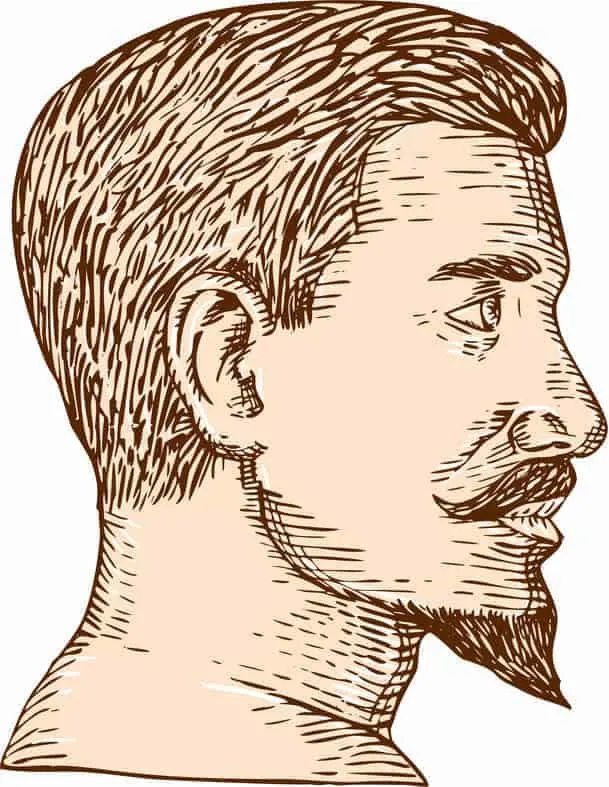
But it can be considered a disconnected goatee style because the chin beard and mustache do not connect.
It’s quite unique because of the way in which both of these components are styled. The mustache is styled into a Handlebar and the chin beard is sculpted into a downward pointing triangle.
It’s eye-catching and attention-grabbing – it may not be for everyone but is certainly impressive.
If you weren’t looking for anything as high-maintenance as this or simply wanted something more subtle, a simple disconnected goatee is still an aesthetically pleasing option.
Just separate the mustache and chin beard by shaving any hairs that connect them. You may be in the extremely common position of not being able to connect your chin beard and mustache in the first place.
In other words, you may simply be unable to grow hair in between them. This is absolutely fine and all the more reason to go for a disconnected goatee style.
If there are any stray, wispy hairs in between them, just shave them off and embrace the disconnected look.
5. How Do You Fix An Uneven Goatee?
An uneven goatee can usually be fixed by adjusting the goatee width or by disconnecting the chin beard from the mustache.
The most common reason for a goatee being uneven is due to shaping the sides asymmetrically.
This can be a tricky thing to get right. Using the rule of allowing the sides to follow the curve of the mustache downward on either side should help. However, even if you do follow this rule, it can be hard to get it right at first.
If you do find that your goatee side angles are uneven, you may need to adjust one of them by shaving it to match the other one.
The risk here is that it eventually looks too narrow. If the sides are essentially vertical, it’s pretty likely that your goatee is now too narrow. The best option would be to shave it all off, regrow, and try again.
One way of taking the guesswork out of it would be to use a goatee shaping template like My Perfect Goatee (Amazon Link). Some may find using templates like this restrictive or awkward, but many find them pretty handy.
Another reason for an uneven goatee is hair distribution. It’s common for there to be hair on one side connecting the chin beard and mustache, but not on the other.
In these instances, it’s usually better to disconnect the goatee completely by removing any stray hairs between the chin beard and mustache. Disconnected goatee styles are great – embrace it and you may well find that your goatee looks less uneven and more symmetrical.
6. What Do You Do If A Goatee Won’t Grow In The Middle?
If a goatee won’t grow in the middle, try growing it out longer or simply change the goatee style to account for this. A pencil-thin goatee or a Van Dyke would be good options.
N.B – This is a style/grooming article. If you’re concerned about an unnatural or uneven distribution, do seek professional advice.
Men often find that patchy facial hair tends to fill itself out as they let it grow out longer. Trimming it prematurely may prevent you from finding out if that ever happens.
Having said that, there are also plenty of men who find that certain areas of their facial hair simply never fill themselves out no matter how long they grow it.
One of these areas may be the middle area of a goatee.
If this is the case, style it out. There are plenty of goatee styles where you don’t need much hair in the middle area of the goatee at all.
For example, the pencil-thin goatee is exactly what it says on the tin; a goatee where the edges are pencil-thin. There’s rarely ever any hair in the middle. If there is, it’s simply shaved off.
The goatee without a soul patch is another example. The soul patch is that tiny patch of hair beneath the lower lip – in other words, in the middle of the goatee. There are a lot of men who prefer their goatee without a soul patch.
The Van Dyke is another goatee variation that may be perfectly suitable here. The Handlebar mustache and pointed chin beard are very separate from each other.
They’re so disconnected that there’s hardly any hair in between them. This may be perfect for men who simply can’t grow much hair in the middle area of their goatee in any case.
Styling it out is often the simplest and least frustrating solution to patchy facial hair. Embrace the weaknesses and use them to your advantage by changing up your style to accommodate them.
7. What Do You Do If Only One Side Of A Goatee Is Connected?
If only one side of the goatee is connected, either embrace the asymmetry or disconnect the other side as well to go for a fully disconnected goatee style.
It can be frustrating when only one side of the goatee connects. You’ll notice that there’s some hair connecting the chin beard and mustache on one side but not the other.
It’s annoying but pretty common.
The fact is, it’s often not as noticeable as you might think. It may be the first thing you see when you look in the mirror, but others probably won’t even realize it.
Asymmetrical facial hair is so common that it can in many ways be considered normal. In fact, perfectly symmetrical beards often look a bit unnatural.
Having said that, goatees often look better, neater, and more professional when they’re symmetrically sculpted and shaped.
So, if you do think that having one side of the goatee connect but not the other is noticeable, it may be a good idea to disconnect it completely.
In other words, shave the hair in between the chin beard and mustache on the side that does connect so that both sides are disconnected.
This is often the simplest and most aesthetically pleasing option, rather than hoping that the side that won’t connect will someday magically grow some hair.
Disconnected goatee styles where the mustache and chin beard lie separate to each other are common and often work very well.
8. What Does A Goatee Look Like From The Side?
From the side, the goatee edges will often look vertical despite actually sloping outward at an angle in reality.
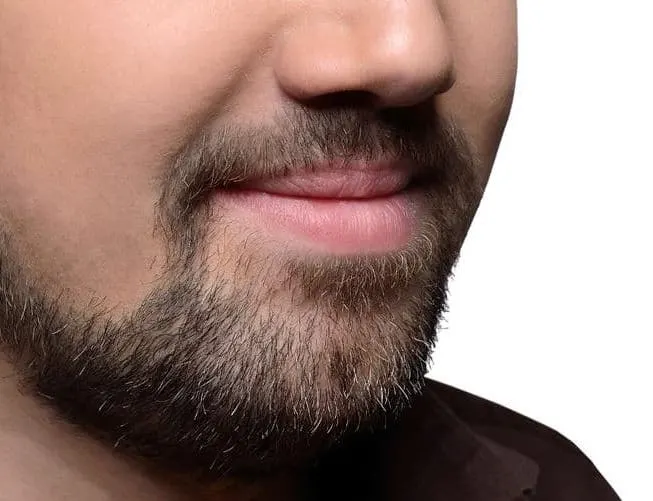
[From 123RF]
Remember, the sides of a goatee should follow the curve of the mustache downward in both directions.
But from the side, this probably won’t be obvious. You’ll see the shaved cheek, as well as a goatee border that appears to be a vertical line downward.
Don’t be fooled by this – goatee sides should have a gentle curve to them. Having goatee borders that are vertical will almost always make the goatee look too narrow.
9. Does A Goatee Make You Look Older?
Goatees often make a man look older, simply because they’re more common among middle-aged men in Western culture.
Although they’re still worn among younger generations, they aren’t as common. It’s all cyclical – goatees may not be as popular with this demographic right now, but they may well be a couple of decades down the line.
Because of this association with an older demographic, going for a goatee may be a quick and easy way to make yourself look older.
Having said that, facial hair in general often makes a man look older. It can add an air of maturity and masculinity that’s hard to replicate with other style choices.
Goatees are no different. If you really wanted to add some maturity to a goatee, you could try dyeing it salt and pepper.
Stubble dyeing is pretty popular at the moment and giving that goatee a silvery edge is a great way to add some years to it if this is what you want.
10. Does A Goatee Make You Look Thinner?
Goatees make you look thinner by adding length and prominence to the chin. Elongating the face like this makes it look thinner, which is why they work so well for round faces.
Even short stubble goatees can give off the illusion of a narrower face. Simply having hair on the chin but not on the cheeks draws the eyes down to the chin.
It just makes the face look longer, even when the hair you’ve got on the chin is very short. Of course, the longer the goatee the more obvious this effect will be and the thinner and narrower the face will look.
It also works on the top end as well. By choosing a hairstyle that adds height such as a quiff, you elongate the face at the top as well. Making the face look longer is a great way to give off the illusion that it’s thinner.
It’s why goatees are great for round faces.
11. Goatee Vs French Beard: Is There A Difference?
The French Beard is simply a type of goatee where the chin beard and mustache are connected and encircle the mouth. The chin beard is usually fuller than in other connected goatee styles.
The reason it should definitely still be known as a goatee variation is that there is hair on the chin but not on the cheeks, just like with any other goatee style.
What sets it apart is that it’s a connected goatee style. It looks strikingly similar to other connected goatee styles, however, such as the Full Goatee or Circle Beard.

[From 123RF]
This similarity can get confusing, as the only real thing that sets the French Beard apart is the fullness of the chin beard which is sometimes allowed to grow long.
As there’s very little that sets these goatee variations apart, don’t focus too much on putting a label on it.
Instead, try to decide whether a connected vs a disconnected goatee variation suits your distribution of facial hair better and go from there. Ultimately, labels don’t really make much difference.
12. Goatee Or Clean-Shaven: Which One Should You Choose?
While a clean-shaven face will always look effortlessly sleek, growing a goatee would be a good option for men looking for something low-maintenance and easy to keep neat.
This is the reason why men who may have previously been anti-beard and pro-shaven eventually land on the goatee as a reasonable compromise.
The goatee is almost like a “gateway facial hairstyle” for men looking to dip their toes into beardedness but don’t want to go full wizard just yet.
It’s a style that allows a man to keep his cheeks shaven and only having to maintain a small amount of hair on their chin and around their mouth.
A goatee isn’t too far from clean-shaven but still gives you a good amount of hair on the face to be immediately noticeable and masculine.
Maintaining a goatee isn’t that difficult for this reason, especially if you’re only maintaining a stubble length.
All you really need to do is run a trimmer over it regularly, keep the cheeks clean-shaven, and ensure the goatee shape is symmetrical. With time and practice, this will become simple.
13. Should You Shave Your Head And Grow A Goatee?
Balding men should strongly consider shaving their heads and growing a goatee. Goatees work well with shaved heads because they add length to the chin and prevent the face from looking too round.
Shaving the head is a great way to embrace baldness instead of trying to cover it up. It’s often a liberating experience with surprisingly attractive results.
But it’s difficult to know what a head will look like fully shaved. A fairly common and sometimes unexpected outcome is that the head looks a little too round once it’s shaved.
Because of this, it’s usually a good idea to grow some facial hair.
This won’t just prevent the head and face from looking too “hairless” above the neck. It’ll also allow you to adjust the shape of your face despite not being able to do this with the (now absent) hair on the scalp.
If you find that the shaved head makes the face look too round or short, use facial hair to your advantage. Use it to add length to the chin.
A simple and low-maintenance way of doing this is to grow a goatee. The goatee will draw direct attention to and add length to the chin.
This will counterbalance the round appearance of the top of the head and should prevent the face as a whole from looking too round.
14. Can Cops Have Goatees?
Most US police departments do not allow cops to have goatees, although policies do vary greatly among them. Expectations to sport a clean-cut appearance and potential interference with protective equipment usually prohibit facial hair.
There may be some exceptions to this. For example, some departments may allow facial hair for religious or cultural reasons.
In addition, some may allow them to have facial hair if they’re working undercover.
But overall, it’s quite rare to see a cop with a goatee. Mustaches are often more accepted among departments, which is why they’re more commonly seen.
An important reason why you won’t often see a cop with a goatee is that facial hair like this may well interfere with protective masks. As safety is an issue here, you can imagine the policies being especially strict.
Ultimately, it will be up to the department. If the officers in charge are more liberal, goatees may well be considered acceptable if safety isn’t considered a concern in that particular cop’s role.
But on the whole, you won’t often see it.
15. How Do Goatees Compare To Other Short Styles?
Here are a couple of comparisons with styles you should know about. It’s important to know how they’re different from goatees and why they may even be a better option for some men.
Mustache Vs Goatee
While a mustache simply refers to a strip of hair above the upper lip, a goatee specifically refers to any facial hairstyle where there’s hair on the chin but not on the cheeks. So, a goatee may or may not include a mustache.
Goatees are far more common than mustaches in modern Western culture, but mustaches are by no means rare.
If you’ve got generally patchy facial hair, a mustache would be a great option as the hair is often thick in this area.
Plus, mustaches are generally easy to maintain because there’s simply less hair to look after.
But mustache maintenance is an art in itself. You may not need to worry about the sculpting and shaping of goatee sides. However, you still need to make sure that mustache is properly oiled, combed, and even balmed.
Overall, if your facial hair distribution will allow you to go for either a goatee or a mustache, which one you choose will be entirely down to personal preference.
Mutton Chops Vs Goatee
The Mutton Chops beard consists of full sideburns that extend down the cheeks but don’t connect to either the mustache or chin beard. It’s essentially the opposite of a Goatee, where there’s hair on the chin but not on the cheeks.
Mutton Chops are far, far less common than goatees in modern Western culture.
While they may be steeped in history, worn by everyone from Elvis to military commanders, Mutton Chops have definitely fallen out of favor in recent decades.
Ultimately, if you’re looking to make a statement or rock a facial hairstyle that’s definitely eye-catching, Mutton Chops may be a reasonable option. It’s a great way to stand out from a crowd but definitely does need some serious maintenance.
If you’re looking for something more low-key and easy to maintain, strongly consider going for a simple goatee instead.
Conclusion
There you have it – a pretty thorough rundown of a beard style that definitely deserves it.
If you were looking to style a goatee, or you already are and you’re just looking to perfect it, hopefully, this information will serve you well.
Enjoy.
Ready Sleek founder. Obsessed with casual style and the minimalist approach to building a highly functional wardrobe. Also a fan of classic, vintage hairstyles.

